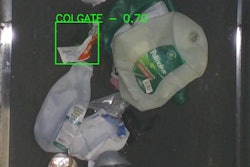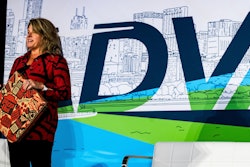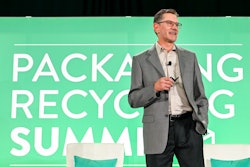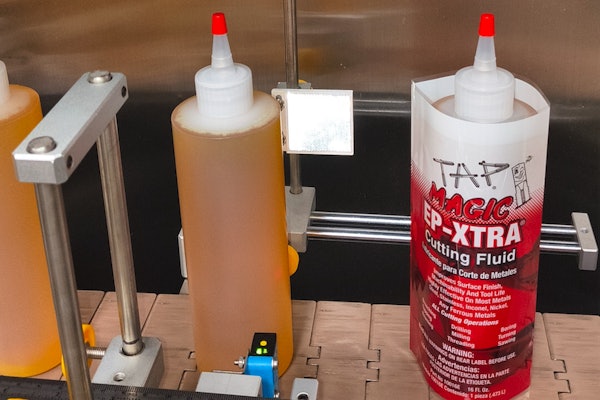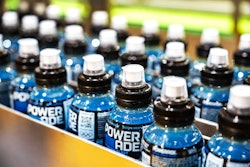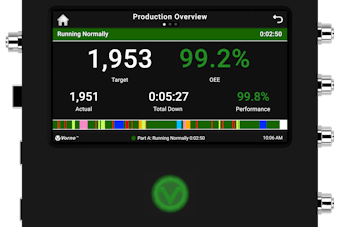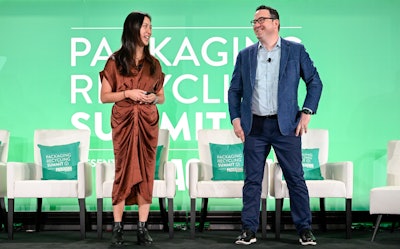
At Packaging World’s recent Packaging Recycling Summit, one of the themes woven throughout the conference was the need for data, which is notoriously sparse in the recycling world. But there is one technology in particular that has emerged over the last several years that may provide the key to unlock that vital information: Artificial Intelligence.
As proof of its potential, Rebecca Hu, founder and CEO of AI and robotics company Glacier, shared the stage with two of the company’s high-profile customers—Colgate-Palmolive and Amazon—to illustrate how AI is capturing data “not only for data’s sake, but to empower everyone who’s thinking about how to enable circularity to do so much more quickly and much more efficiently,” Hu explained.
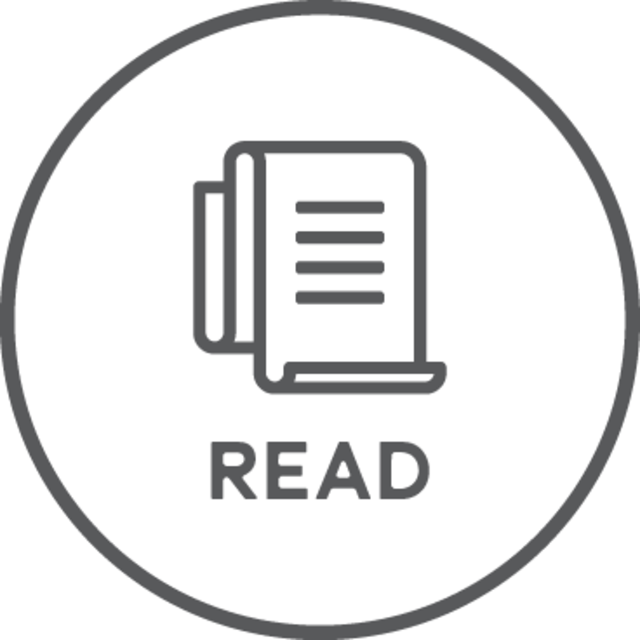 | Read this related article, “Live at Waste Expo: Brands to Benefit from MRFs’ AI Robotic Sorters?” |
In the case of Colgate, the story begins with the company’s five-year journey to transform its toothpaste tube from a non-recyclable multi-material laminate to one that is recyclable in-practice and at-scale. “Globally there’s about 20 billion toothpaste tubes manufactured every year. And without a circular end of life that’s more mainstream, the vast majority of these would end up in landfill or, if not worse, leaked into the environment,” explained Greg Corra, VP, Global Packaging & Sustainability, Colgate-Palmolive Company.
Colgate-Palmolive is one of the world’s biggest manufacturers of toothpaste, producing 17,000 products/min. “That’s about 9 billion a year,” said Corra. “So we had an opportunity and a responsibility to address this issue.”
 Colgate-Palmolive was the first to launch a fully recyclable HDPE toothpaste tube in 2022.
Colgate-Palmolive was the first to launch a fully recyclable HDPE toothpaste tube in 2022.
Its solution was to develop a recyclable tube made from high-density polyethylene with an ethyl vinyl alcohol barrier layer. The new package is designed to be compatible with existing HDPE rigid recycling streams.
Colgate knew however that delivering a tube that would be recyclable in-practice and at-scale would require industry-wide adoption, so it shared its technology openly, inviting competitors to join the effort. This collaborative approach has already seen significant uptake, with the other three largest toothpaste manufacturers committing to the change. As of 2024, nine out of every 10 toothpaste tubes sold in the U.S. are designed to be recyclable.
To understand the impact of the new tube, Colgate partnered with Glacier, which developed a first-of-its-kind vision-based AI model capable of identifying and sorting both toothpaste tubes and non-toothpaste tubes in real-time. Installed in a number of partner material recovery facilities (MRFs), the AI camera captures continuous images of tubes on conveyor belts, allowing it to detect them “in all their flavors and variations in the way they show up at the MRF,” said Hu.
 | Read this related article, “Colgate Rolls Out Monomaterial Recyclable Tube, Tells People to ‘Recycle Me!’” |
Hu added that AI’s ability to provide real-time, easily digestible data is a game-changer. Colgate and partner MRFs can log in to a dashboard and learn what’s happening on a given belt over the last year, or even the last minute. “And so we can aggregate all that amazing tube data, all those images we’re collecting to answer questions like, what proportion of tubes in the recycling stream are toothpaste tubes, or what impact did our activation campaigns have on the recycling rate in a given geography over time? And this is all really just scratching the very, very surface of the types of strategic circularity questions this type of data can start to help answer in real time,” she said.
“I know it can be really hard to tell what’s real and what’s just hyped when it comes to AI,” Hu continued. “There’s a lot of news out there, and as someone who’s worked in this space for many, many years, I can tell you what I’m seeing on the front lines. The type of AI progress we’re sharing here today is really impactful and probably a little bit history-making. And it’s the result of many, many months of really hard, invisible work and collaboration between Glacier and Colgate and our MRF partners. So this work, I have to say, at the end of the day, is worth it.”
Amazon enlists Glacier to inform packaging design
 Nicholas Ellis of Amazon joined Glacier’s Rebecca Hu to discuss how Amazon is using AI to gather insights on package design for recycling.
Nicholas Ellis of Amazon joined Glacier’s Rebecca Hu to discuss how Amazon is using AI to gather insights on package design for recycling.
In the case of Glacier’s work with Amazon, the goal was to identify bioplastic packaging in a MRF to understand the viability of transitioning to this novel material and to facilitate its pathway through the recycling stream. In early 2024, Amazon provided considerable funding to Glacier through its Climate Pledge Fund, a $2 billion corporate venture capital fund dedicated to investing in solutions that can help the company achieve net-zero emissions by 2040.
One of Amazon’s critical areas of focus is improving the recyclability of its packaging materials. “Back in 2019, we knew one of the key challenges we were going to have to square down with was getting a handle on our boxes, plastic wrappers, and the packaging we’re sending customers in knowing what happens to it and then improving on that design to ensure it becomes more recyclable,” explained Nicholas Ellis, principal of the Amazon Climate Pledge Fund. The partnership with Glacier emerged as a promising solution to this challenge.
To aid Amazon in following the path of flexible bioplastic packaging through the recycling stream, Glacier installed an AI camera on a MRF paper line, where much of the film ends up. It then developed an AI model to identify bioplastics “when there are thousands of items every single minute flowing across the conveyor belt,” Hu explained.
After training on thousands of images over the course of several months, the AI model can now detect various types of bioplastic packaging, from produce bags to snack packaging, with 90% accuracy.
Among the learnings gleaned from the project was the importance of packaging design elements. For instance, the AI model’s ability to detect packaging is influenced by the size of the item and the visibility of distinguishing features, such as graphics. Another insight was that by collecting and analyzing data on the recyclability of packaging materials, Amazon can make informed decisions to enhance the design and recovery of its packaging. “If you don’t have the data, you can’t make a good decision,” stated Ellis.
 | Read this related article and watch the accompanying video, “Amazon Invests in AI-Powered Packaging Sortation Robots for MRFs” |
Concluding the session, he added, “There are a few key things I hope each of you takes out of this presentation. One is there are already some key learnings you can carry right back today into your packaging design. Consistency matters, size matters, differentiation matters. These key lessons are something we’ve internalized. We’ve already started to adjust our packaging as a result.
“If you’re a MRF operator, I encourage you to consider how AI can change the economics of your business, make customers like Amazon better partners to you, and make sure we’re not wasting anything in that recycling stream—that we’re actually recovering as much as we possibly can.” PW


